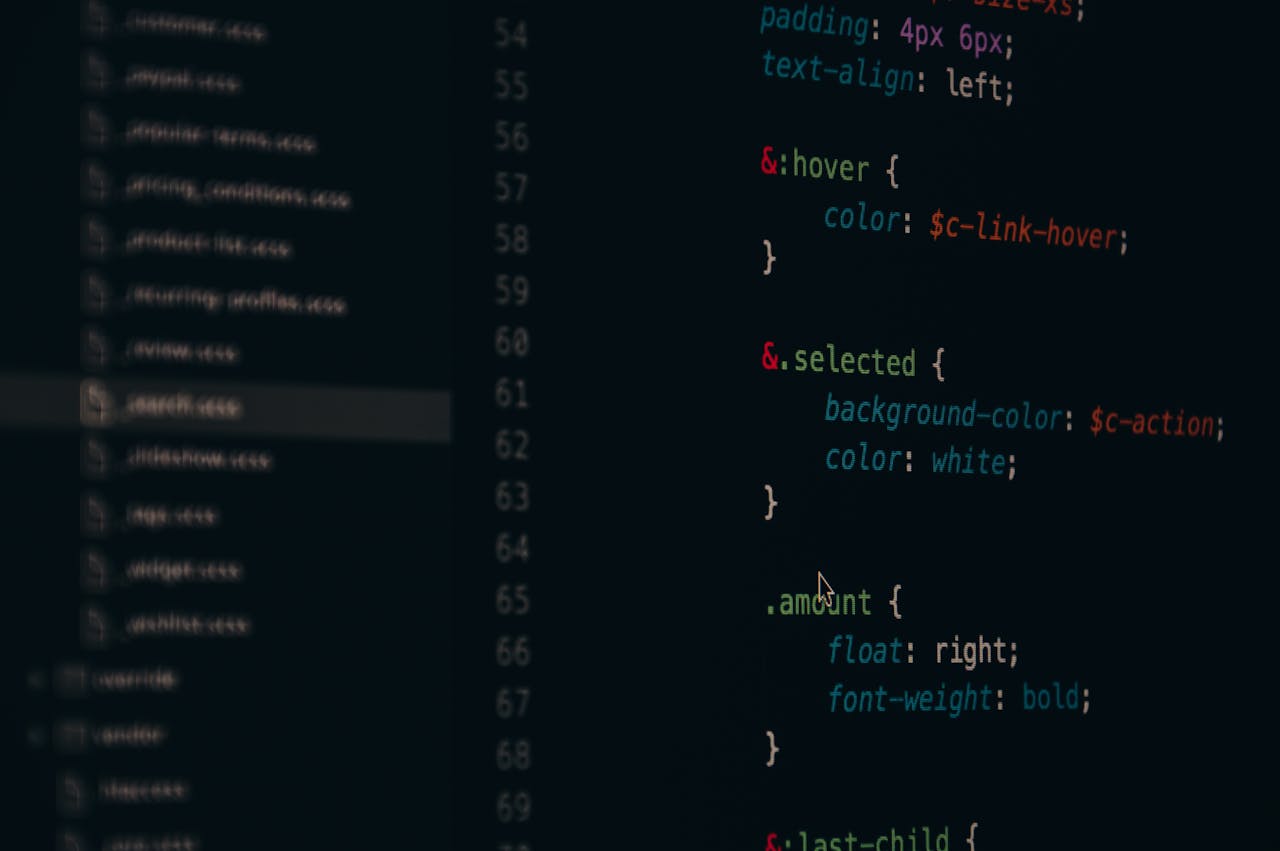Here’s a comprehensive A-to-Z glossary of key AI terms and their definitions: This glossary covers foundational and advanced AI concepts, providing a broad overview of the field.
Artificial Intelligence (AI) Terms: A to Z Glossary
A
- Activation Function: A function in neural networks that determines the output of a node (e.g., ReLU, Sigmoid).
- Adversarial Attack: Deliberate manipulation of input data to deceive an AI model.
- Adversarial Training: Training models with adversarial examples to improve robustness.
- Autoencoder: A neural network used for unsupervised learning, often for dimensionality reduction or feature learning.
- Artificial General Intelligence (AGI): AI with human-like cognitive abilities, capable of performing any intellectual task.
- Attention Mechanism: A component in neural networks that focuses on specific parts of input data (e.g., in transformers).
B
- Bagging (Bootstrap Aggregating): An ensemble technique that combines multiple models to reduce variance.
- Bayesian Network: A probabilistic graphical model that represents variables and their dependencies.
- BERT (Bidirectional Encoder Representations from Transformers): A transformer-based model for NLP tasks.
- Bias-Variance Tradeoff: The balance between a model’s complexity and its ability to generalize.
- Boosting: An ensemble technique that builds models sequentially to correct errors from previous models (e.g., AdaBoost, Gradient Boosting).
C
- Capsule Network: A neural network architecture designed to improve hierarchical feature learning.
- Chatbot: An AI-powered program designed to simulate conversation with human users.
- Clustering: An unsupervised learning technique that groups similar data points together (e.g., K-Means, DBSCAN).
- Convolutional Neural Network (CNN): A deep learning model commonly used for image and video analysis.
- Cross-Validation: A technique for evaluating model performance by splitting data into multiple subsets.
- Curriculum Learning: Training models on easier tasks first before progressing to harder ones.
D
- Data Augmentation: Techniques to increase the diversity of training data (e.g., flipping images, adding noise).
- Deep Learning (DL): A subset of machine learning that uses neural networks with multiple layers to model complex patterns.
- Dimensionality Reduction: Reducing the number of features in a dataset (e.g., PCA, t-SNE).
- Dropout: A regularization technique to prevent overfitting in neural networks by randomly deactivating nodes.
- Dynamic Programming: A method used in reinforcement learning to solve complex problems by breaking them into simpler subproblems.
E
- Edge AI: AI algorithms processed locally on devices (e.g., smartphones, IoT devices) rather than in the cloud.
- Embedding Layer: A layer in neural networks that converts categorical data into dense vectors.
- Ensemble Learning: Combining multiple models to improve overall performance (e.g., Random Forest, Gradient Boosting).
- Epoch: One complete pass through the entire training dataset during machine learning.
- Explainable AI (XAI): AI systems designed to provide transparent and understandable explanations for their decisions.
F
- Feature Engineering: The process of selecting, transforming, and creating features to improve model performance.
- Federated Learning: A decentralized approach to training AI models across multiple devices without sharing raw data.
- Fine-Tuning: Adapting a pre-trained model to a specific task by training it further on a smaller dataset.
- F1 Score: A metric that balances precision and recall, often used for classification tasks.
- Few-Shot Learning: Training models to perform tasks with very few labeled examples.
G
- GAN (Generative Adversarial Network): A framework where two neural networks (generator and discriminator) compete to generate realistic data.
- Gradient Boosting: An ensemble technique that builds models sequentially to correct errors from previous models.
- Gradient Descent: An optimization algorithm used to minimize the loss function in machine learning.
- Graph Convolutional Network (GCN): A neural network designed for graph-structured data.
- Graph Neural Network (GNN): A type of neural network that operates on graph data.
H
- Human-in-the-Loop (HITL): A system where humans are involved in training, validating, or improving AI models.
- Hyperparameter Tuning: The process of optimizing hyperparameters to improve model performance (e.g., grid search, random search).
- Hugging Face: A company and open-source library focused on NLP and transformer models.
I
- Image Segmentation: Dividing an image into regions to identify objects or boundaries.
- Instance-Based Learning: A learning approach where predictions are made based on similar instances in the training data (e.g., KNN).
- Inverse Reinforcement Learning: Inferring the reward function from observed behavior.
- Imputation: Techniques for handling missing data in datasets.
J
- JAX: A high-performance library for numerical computing and machine learning developed by Google.
K
- K-Means Clustering: An unsupervised learning algorithm used to group data into clusters.
- Kernel: A function used in machine learning to transform data into a higher-dimensional space (e.g., in SVMs).
- Knowledge Distillation: Transferring knowledge from a large model to a smaller one to improve efficiency.
- Knowledge Graph: A structured representation of knowledge that maps relationships between entities.
L
- Label Encoding: Converting categorical labels into numerical values for machine learning.
- Latent Space: A compressed representation of data learned by a model.
- Learning Rate: A hyperparameter that controls the step size during model optimization.
- Long Short-Term Memory (LSTM): A type of recurrent neural network (RNN) used for sequence modeling.
M
- Machine Learning (ML): A subset of AI that enables systems to learn from data and improve without explicit programming.
- Meta-Learning: A technique where models learn how to learn, often used in few-shot learning.
- Mixture of Experts (MoE): A model architecture that combines specialized sub-models for different tasks.
- Model Drift: The degradation of model performance over time due to changes in data distribution.
- Model Interpretability: The ability to understand and explain how a model makes decisions.
- Multi-Agent System: A system where multiple AI agents interact to achieve a goal.
N
- Naive Bayes: A probabilistic classifier based on Bayes’ theorem, often used for text classification.
- Natural Language Processing (NLP): A field of AI focused on enabling machines to understand and generate human language.
- Neural Architecture Search (NAS): Automating the design of neural network architectures.
- Neural Network: A computational model inspired by the human brain, consisting of interconnected layers of nodes.
- Normalization Layer: A layer in neural networks that standardizes inputs (e.g., BatchNorm, LayerNorm).
O
- Object Detection: A computer vision task that identifies and locates objects within an image.
- One-Hot Encoding: Representing categorical data as binary vectors.
- Ontology: A formal representation of knowledge in a domain, often used in AI systems.
- Optimization Algorithms: Techniques used to minimize or maximize a function (e.g., Gradient Descent, Adam).
- Overfitting: A modeling error where a machine learning model performs well on training data but poorly on new data.
P
- Perceptron: The simplest type of neural network, consisting of a single layer.
- Precision and Recall: Metrics used to evaluate classification models; precision measures accuracy of positive predictions, while recall measures the fraction of positives correctly identified.
- Pre-trained Model: A model trained on a large dataset and fine-tuned for specific tasks.
- Probabilistic Graphical Model (PGM): A model that represents probabilistic relationships between variables.
- Prompt Engineering: The process of designing effective inputs (prompts) to guide AI models’ outputs.
Q
- Quantum AI: The application of quantum computing to AI tasks for improved efficiency and capabilities.
- Quantization: Reducing the precision of model parameters to improve efficiency (e.g., for edge devices).
R
- Recurrent Neural Network (RNN): A neural network designed for sequential data, such as time series or text.
- Regression Analysis: A statistical method for modeling the relationship between variables.
- Reinforcement Learning with Human Feedback (RLHF): Training models using feedback from humans to improve alignment.
- Residual Network (ResNet): A deep neural network architecture with skip connections to improve training.
- Robotics: The field of designing and programming robots, often incorporating AI.
S
- Self-Supervised Learning: A learning approach where models generate their own labels from unlabeled data.
- Sequence-to-Sequence (Seq2Seq): A model architecture for tasks like machine translation.
- Swarm Intelligence: Collective behavior of decentralized systems inspired by nature (e.g., ant colonies).
- Synthetic Data: Artificially generated data used to train AI models when real data is scarce or sensitive.
T
- TensorFlow/Keras: Popular frameworks for building and training machine learning and deep learning models.
- Transformer: A neural network architecture based on self-attention, widely used in NLP (e.g., GPT, BERT).
- Transfer Learning: Reusing a pre-trained model for a new task.
- Tree-Based Models: Models that use decision trees for predictions (e.g., Random Forest, Gradient Boosting).
- Triplet Loss: A loss function used in tasks like face recognition to learn embeddings.
U
- Uncertainty Quantification: Measuring the uncertainty in model predictions.
- Universal Approximation Theorem: A theorem stating that neural networks can approximate any function given sufficient capacity.
- Unsupervised Learning: A machine learning approach where the model is trained on unlabeled data to find patterns.
V
- Variational Autoencoder (VAE): A generative model that learns latent representations of data.
- Vision-Language Model: A model that processes both visual and textual data (e.g., CLIP).
W
- Weak AI (Narrow AI): AI designed for specific tasks, as opposed to strong AI, which aims for general intelligence.
- Weight Initialization: Setting initial values for model weights to improve training.
- Word2Vec: A technique for learning word embeddings from text data.
X
- XAI (Explainable AI): AI systems designed to provide transparent and understandable explanations for their decisions.
- XGBoost: A scalable and efficient implementation of gradient boosting for supervised learning.
Y
- Yield Management: The use of AI and data analysis to optimize pricing and inventory decisions.
- YOLO (You Only Look Once): A real-time object detection algorithm.
Z
- Zero-Shot Learning: A model’s ability to perform tasks it was not explicitly trained on.
- Z-Score Normalization: Scaling data to have a mean of 0 and a standard deviation of 1.
Reference
- Alan Turing: Wikipedia
- Turing Test: Stanford Encyclopedia of Philosophy
- Artificial Intelligence: Britannica
- AI Technologies: IBM
- AI in Hospitality Industry: Forbes
- AI in Travel and Hospitality: McKinsey
- AI’s future and policy considerations: Ethical AI development
- AI’s future and policy considerations: Future of generative AI
- Critical thinking and AI: Critical Thinking in Leadership






